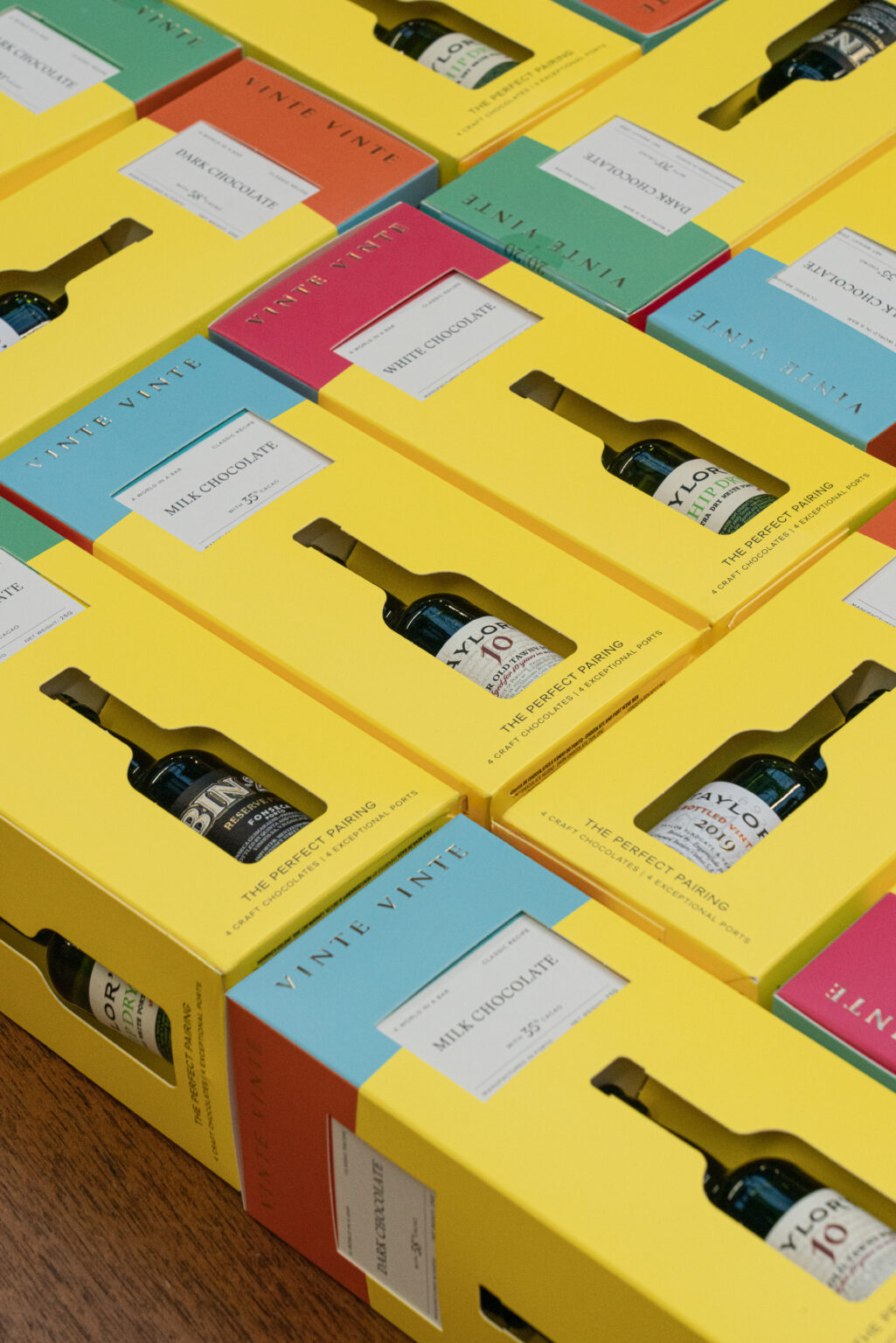Chocolate and wine make a fabulous combination and the pairing of flavours between the two is an art that is gaining more and more fans.
The perception of flavour is a complex process that involves different sensory information, at the level of the tongue (taste), nose (smell) and sense of touch (texture of the product). That’s why, when pairing cocoa with wine, it’s important to take into account the intensities of both products. For example, wines like Port, with their rich, caramelised flavour, go perfectly with chocolates that contain a high cocoa content, highlighting the nuances of both flavours. The deep, intense flavour of the dark chocolate complements the fruity notes and sweetness of the wine, creating a unique tasting experience.
Cocoa is, therefore, an excellent match for full-bodied, complex wines such as Port, but not only. In addition to Port, several other wines are great options for pairing with chocolate, especially desserts that use good quality cocoa. The key is to look for wines that complement the complexity of the chocolate, creating a harmony of flavours that elevates the experience.
Pairing all the chocolates with all the wines in the world would be an almost impossible task. However, there are some basic notes on how to choose a chocolate to pair with a wine. Find out!
White chocolate, which has a high amount of cocoa butter, no tannins or astringency, is a good choice for pairing with fruity and citrusy white or rosé wines.
Milk chocolates, which are high in cocoa butter and milk fat, are great for pairing with dry wines.
Dark, bitter, possibly acidic chocolates with a considerable amount of cocoa butter are great for contrasting with sweet Port wines. In fact, it is said that pairing chocolate and Port is considered the ‘perfect marriage’ or ‘a match made in heaven’!
Now that you know the best pairings, try this experiment. Put a piece of chocolate in your mouth and let it melt. Then taste the wine and let the two envelop and complement each other. Is it amazing or not?


